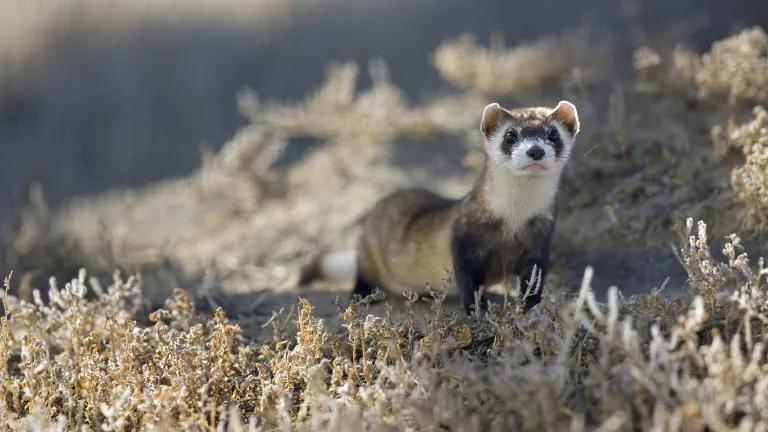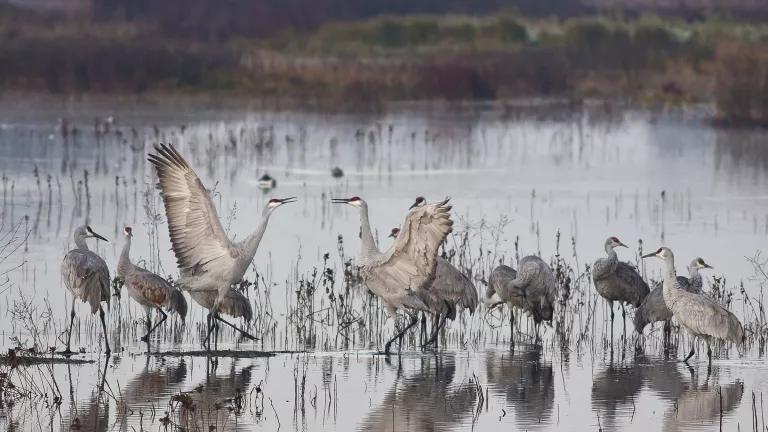Trump Administration Hamstrings Ability to Conserve Wildlife Habitat
Amid a global biodiversity crisis, the U.S. Fish and Wildlife Service’s decision to further weaken the Endangered Species Act will push numerous species that much closer to extinction.

Once believed to be extinct, the black-footed ferret has made a comeback, thanks in part to the Endangered Species Act, but it is still threatened by habitat loss and pesticides.
Amid a global biodiversity crisis, the U.S. Fish and Wildlife Service’s decision to further weaken the Endangered Species Act will push numerous species that much closer to extinction.
UPDATE: On December 17, 2020—just two days after the U.S. Fish and Wildlife Service finalized a senseless new rule under the Endangered Species Act—the agency pushed through yet another change that even further weakens this critical wildlife protection law. This time, the new rule will decrease designation of critical habitat based on economic costs, "making critical habitat analysis less about survival of a species and more about profits" for developers and fossil fuel interests, says Rebecca Riley, legal director of NRDC's Nature Program. "The rule improperly shifts responsibility for economic analyses to industry as well as state and local governments, an abandonment of the agency’s responsibilities under the law."
With only several weeks left before the presidential transition, the U.S. Fish and Wildlife Service today finalized a change to the Endangered Species Act (ESA) that makes it more difficult to conserve critical habitat for imperiled species.
“For the past four years, the Trump administration has been laser-focused on weakening the Endangered Species Act—America’s most important wildlife protection law that has prevented the extinction of species like the bald eagle and grizzly bear,” says Rebecca Riley, legal director of NRDC’s Nature Program.
Under the new rule, the term “habitat” is defined so that it excludes some areas that could support a species in the future. A broad definition that allows for protection of shifting habitat is critical as species move to survive in a changing climate.
A strong ESA is more critical now than ever: In the last 50 years, the planet has lost more than 60 percent of all its wild animals. Now one million species are at risk of extinction due to human-driven threats like climate change, development, poaching, and pesticide use, according to the 2019 U.N. biodiversity report.
Conserving wildlife habitat helps people, too. Diverse, intact ecosystems help filter pollutants from drinking water, improve air quality, ensure widespread pollination and a secure food supply, and provide necessary resources to produce medicine.
The administration’s initial proposal for this recent change prompted more than 167,000 public comments in the month following its release last August—most in opposition. “This administration continues to favor special interests over the interests of most Americans, who favor species protections,” Riley says.
In 2019, the U.S. Fish and Wildlife Service and the U.S. National Marine Fisheries Service also finalized separate changes to the ESA that impacted how species are listed. These changes removed automatic protections for wildlife recently designated as “threatened” and injected economic factors into decision-making weighing a species’ designation—which is antithetical to the law’s principles.
“We need to call this out for what it is: a blatant disregard for our nation’s wildlife, wild places, and fight against climate change in favor of more oil and gas development and habitat destruction,” Riley says.



